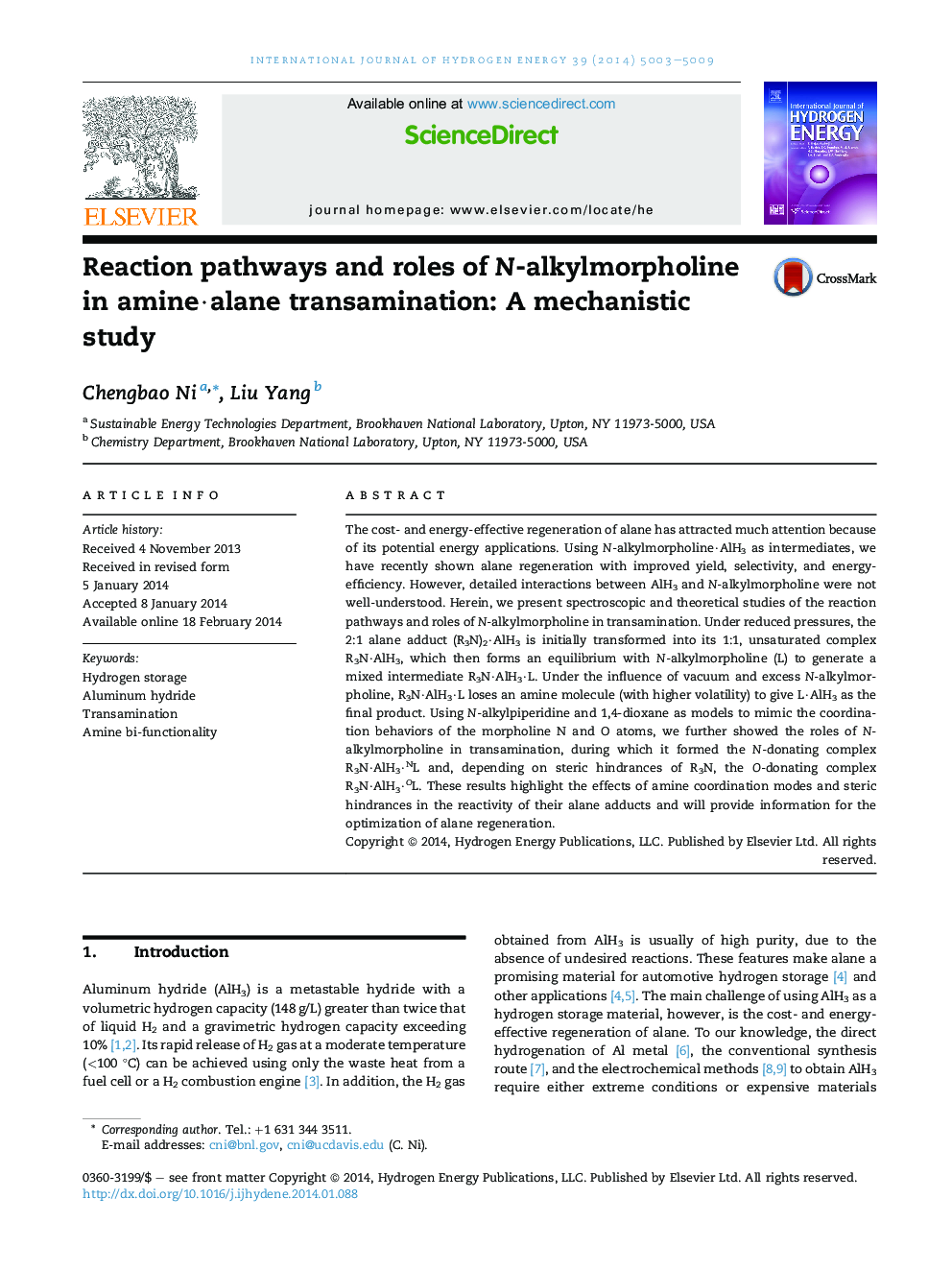| Article ID | Journal | Published Year | Pages | File Type |
|---|---|---|---|---|
| 1281268 | International Journal of Hydrogen Energy | 2014 | 7 Pages |
•Illustration of the reaction pathways of (R3N)2·AlH3 with N-alkylmorpholines.•Establishment of the roles of morpholine in amine·alane transamination.•Isolation of the coordination modes of N-alkylmorpholine in reactions.•Illustration of the steric effects of Me3N, EtMe2N, and morpholine.
The cost- and energy-effective regeneration of alane has attracted much attention because of its potential energy applications. Using N-alkylmorpholine·AlH3 as intermediates, we have recently shown alane regeneration with improved yield, selectivity, and energy-efficiency. However, detailed interactions between AlH3 and N-alkylmorpholine were not well-understood. Herein, we present spectroscopic and theoretical studies of the reaction pathways and roles of N-alkylmorpholine in transamination. Under reduced pressures, the 2:1 alane adduct (R3N)2·AlH3 is initially transformed into its 1:1, unsaturated complex R3N·AlH3, which then forms an equilibrium with N-alkylmorpholine (L) to generate a mixed intermediate R3N·AlH3·L. Under the influence of vacuum and excess N-alkylmorpholine, R3N·AlH3·L loses an amine molecule (with higher volatility) to give L·AlH3 as the final product. Using N-alkylpiperidine and 1,4-dioxane as models to mimic the coordination behaviors of the morpholine N and O atoms, we further showed the roles of N-alkylmorpholine in transamination, during which it formed the N-donating complex R3N·AlH3·NL and, depending on steric hindrances of R3N, the O-donating complex R3N·AlH3·OL. These results highlight the effects of amine coordination modes and steric hindrances in the reactivity of their alane adducts and will provide information for the optimization of alane regeneration.
Graphical abstractFigure optionsDownload full-size imageDownload as PowerPoint slide
